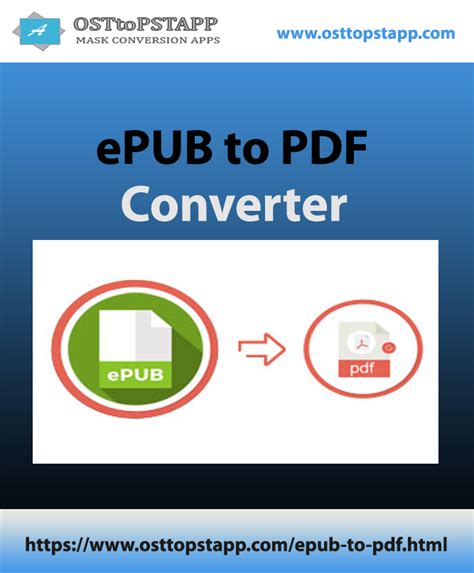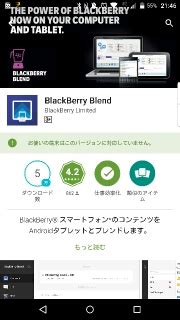Open flashdrive
Author: b | 2025-04-23

Basic instruction on how to use a flashdrive in your laptop. What a flashdrive is? How to install a flashdrive. How to open flashdrive folders and files.

How to Open a Flashdrive on a Mac - Chron.com
Telling Local time:11:25 AM Posted 29 June 2012 - 06:12 AM Sorry about the delay: On the machine I wished to use for the testing, a relatively new 500GB HDD (with the Windows XP system on it) died abruptly (completely) and I've had to do some hardware juggling and image restoration/cloning to get things rolling again.I have tested to my satisfaction the following instructions and the xPUD_MBRfix tool provided by noahdfear and found that they will do exactly what we need them to do. Please let me know if the computer can boot normally to Windows after performing the following steps. On a working computer, download xPUD_MBRfix and save the file to your USB drive/flashdrive (it can be the same flashdrive or a different one as the one you already have bootable with xPUD). On the ailing computer:Insert the flashdrive (or both flashdrives if you choose to use two) and boot the ailing computer to xPUD.Click on File.Expand the mnt icon on the left (click on the little arrow beside the icon).sda1, sda2 etc. ...usually correspond to your HDD partitionssdb1, sdc1 is likely to correspond to a USB flashdrive, external USB hard drive etc.Note: If you choose to use just one USB drive/flashdrive for both the bootable xPUD operating system and the file xPUD_MBRfix, it may happen that after booting to xPUD and looking for the flashdrive, you are not able to find it anywhere. If this happens, simply unplug the flashdrive, wait briefly and then re-plug it back into. Basic instruction on how to use a flashdrive in your laptop. What a flashdrive is? How to install a flashdrive. How to open flashdrive folders and files. Basic instruction on how to use a flashdrive in your laptop. What a flashdrive is? How to install a flashdrive. How to open flashdrive folders and files. Basic instruction on how to use a flashdrive in your laptop. What a flashdrive is? How to install a flashdrive. How to open flashdrive folders and files. Basic instruction on how to use a flashdrive in your laptop. What a flashdrive is? How to install a flashdrive. How to open flashdrive folders and files. Basic instruction on how to use a flashdrive in your laptop. What a flashdrive is? How to install a flashdrive. How to open flashdrive folders and files. Basic instruction on how to use a flashdrive in your laptop. What a flashdrive is? How to install a flashdrive. How to open flashdrive folders and files. Basic instruction on how to use a flashdrive in your laptop. What a flashdrive is? How to install a flashdrive. How to open flashdrive folders and files. AC power adapter and, in the case of a laptop, remove the battery as well. 5.) Insert the USB flashdrive into one of the USB ports on the computer. In most cases, the particular USB port that you use will not matter. That being said, some computers are finicky and will only accept a specific USB port for recovery. 6.) With all power sources disconnected from the computer, hold down the ‘Windows’ key and the ‘B’ key. Do not release these keys until instructed to do so. 7.) Connect the AC power adapter to the computer. 8.) Press the ‘Power’ button on the computer. 9.) When the LED’s illuminate, you may release the two keys from step #6. You may notice some of the LED’s illuminating differently from how they do in normal computer operation. 10.) After about 10 seconds, the computer should start reading the flashdrive. While searching for the file system, the computer may (should) beep for one second. The number of beeps can vary based on the capacity of the flashdrive as well as the number of files on it. If the BIOS file is not found, the computer will reboot and try again. 11.) If the file is found, the computer will load it. The particular computer used in this tutorial took 12 seconds to load the BIOS file, but times can vary based on the size of the BIOS image. No beeps will be heard during this process. 12.) After the computer is finished loading the BIOS file, it will start flashing the BIOS. During this process, the computer will beep every 2 seconds. The computer used in this tutorial took about 32 seconds. About 5 seconds after the flashing process has finished, the computer will shutdown. If the recovery process was successful, then the BIOS should work normally the next time you boot up the computer. *NOTE: Not all devices will produce beeping sounds during the recovery process. The USB flashdrive LED should still blink on and off while the computer is loading the BIOS image. If the loading process is successful, the computer should shutdown within the next minute. For larger BIOS images, this may take longer. Was this reply helpful? Yes No Be alert for scammers posting fake support phone numbers and/or email addresses on the community. If you think you have received a fake HP Support message, please report it to us by clicking on "Flag Post". † The opinions expressed above are the personal opinions of the authors, not of HP. By using this site, you accept the Terms of Use and Rules of Participation. English Open Menu † The opinions expressed above are the personal opinions of the authors,Comments
Telling Local time:11:25 AM Posted 29 June 2012 - 06:12 AM Sorry about the delay: On the machine I wished to use for the testing, a relatively new 500GB HDD (with the Windows XP system on it) died abruptly (completely) and I've had to do some hardware juggling and image restoration/cloning to get things rolling again.I have tested to my satisfaction the following instructions and the xPUD_MBRfix tool provided by noahdfear and found that they will do exactly what we need them to do. Please let me know if the computer can boot normally to Windows after performing the following steps. On a working computer, download xPUD_MBRfix and save the file to your USB drive/flashdrive (it can be the same flashdrive or a different one as the one you already have bootable with xPUD). On the ailing computer:Insert the flashdrive (or both flashdrives if you choose to use two) and boot the ailing computer to xPUD.Click on File.Expand the mnt icon on the left (click on the little arrow beside the icon).sda1, sda2 etc. ...usually correspond to your HDD partitionssdb1, sdc1 is likely to correspond to a USB flashdrive, external USB hard drive etc.Note: If you choose to use just one USB drive/flashdrive for both the bootable xPUD operating system and the file xPUD_MBRfix, it may happen that after booting to xPUD and looking for the flashdrive, you are not able to find it anywhere. If this happens, simply unplug the flashdrive, wait briefly and then re-plug it back into
2025-03-28AC power adapter and, in the case of a laptop, remove the battery as well. 5.) Insert the USB flashdrive into one of the USB ports on the computer. In most cases, the particular USB port that you use will not matter. That being said, some computers are finicky and will only accept a specific USB port for recovery. 6.) With all power sources disconnected from the computer, hold down the ‘Windows’ key and the ‘B’ key. Do not release these keys until instructed to do so. 7.) Connect the AC power adapter to the computer. 8.) Press the ‘Power’ button on the computer. 9.) When the LED’s illuminate, you may release the two keys from step #6. You may notice some of the LED’s illuminating differently from how they do in normal computer operation. 10.) After about 10 seconds, the computer should start reading the flashdrive. While searching for the file system, the computer may (should) beep for one second. The number of beeps can vary based on the capacity of the flashdrive as well as the number of files on it. If the BIOS file is not found, the computer will reboot and try again. 11.) If the file is found, the computer will load it. The particular computer used in this tutorial took 12 seconds to load the BIOS file, but times can vary based on the size of the BIOS image. No beeps will be heard during this process. 12.) After the computer is finished loading the BIOS file, it will start flashing the BIOS. During this process, the computer will beep every 2 seconds. The computer used in this tutorial took about 32 seconds. About 5 seconds after the flashing process has finished, the computer will shutdown. If the recovery process was successful, then the BIOS should work normally the next time you boot up the computer. *NOTE: Not all devices will produce beeping sounds during the recovery process. The USB flashdrive LED should still blink on and off while the computer is loading the BIOS image. If the loading process is successful, the computer should shutdown within the next minute. For larger BIOS images, this may take longer. Was this reply helpful? Yes No Be alert for scammers posting fake support phone numbers and/or email addresses on the community. If you think you have received a fake HP Support message, please report it to us by clicking on "Flag Post". † The opinions expressed above are the personal opinions of the authors, not of HP. By using this site, you accept the Terms of Use and Rules of Participation. English Open Menu † The opinions expressed above are the personal opinions of the authors,
2025-04-10A disk burner. Get one: Life would be sooooooooooooo ... much easier!I have had no success finding a successful (and legal?) method of creating a bootable XP Recovery Console flashdrive, although a method used to be available on the net once, and I actually do have one myself! That just makes the situation even more frustrating!Let me know if you are having trouble, and we'll see what we can do about using an alternative flashdrive-based solution. As a start, let me know what bootable Linux etc. flashdrives you have available already.Edit: Actually, since you already have a bootable xPUD flashdrive, we can very easily use that along with a downloadable tool from noahdfear! Don't lose that xPUD flashdrive!I might just test that this method works as expected (give me some time), and then I'll post it for you to use if all is OK. Edited by AustrAlien, 28 June 2012 - 02:21 AM. AustrAlienGoogle is my friend. Make Google your friend too. Back to top"> Back to top #37 Kaljinyu Kaljinyu Topic Starter Members 337 posts OFFLINE Gender:Male Local time:09:25 PM Posted 28 June 2012 - 07:26 PM I have xPUD and Ubuntu. But I can get others. And what I planned to do in making a bootable flash drive was extracting the .ISO, and also copying this BOOT.INI file to the drive, and some other files too, but I forgot where I found them. Back to top"> Back to top #38 AustrAlien AustrAlien Inquisitor Members 6,772 posts OFFLINE Gender:Not
2025-04-06